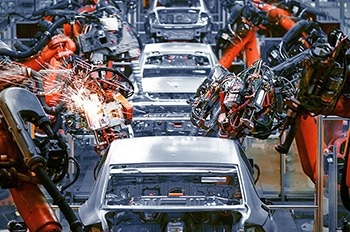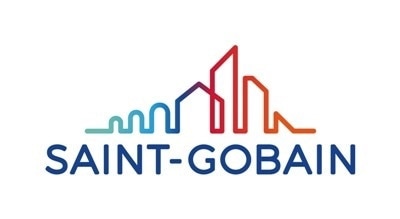Global concerns about energy insecurity, climate change, pollution, and biodiversity loss have prompted firms worldwide to refine their practices, policies, and investments toward sustainability.

Image Credit: Saint-Gobain Tape Solutions
Saint-Gobain® has committed to achieving net zero carbon emissions by 2050 by implementing a unified purpose called "Making the World a Better Home."
To reach this target, Saint-Gobain® involves internal and external stakeholders and partners in ongoing improvement projects.
Saint-Gobain Tape Solutions provides foam and tape products for the construction, mobility, and industrial markets. It offers unparalleled quality, service, and support for bonding, protection, and insulation needs on a global scale.
Its products are designed to withstand extreme environmental conditions, provide consistent performance, and meet the evolving requirements of renewable energy generators and users.
Although tapes may seem insignificant, they can serve as enablers of sustainability by enhancing the design, production, delivery, and shelf-life or increasing the throughput of fabricated products.
Utilizing sustainability as a growth driver to offer greener solutions, we not only focus on our materials but also on engaging everyone along the supply chain to decarbonize the whole industry from mobility to industrial and construction segments. By working closely with our customers and suppliers, we are one step closer towards developing solutions that meet current and future needs of our planet.
Pascaline Hayoun, Surface Solutions Strategy Director
Roadmap to Net Zero Carbon by 2050
Saint-Gobain has developed a roadmap to achieve net zero carbon emissions by targeting all CO2 scopes, including direct carbon emissions (scope 1), electricity-related emissions (scope 2), and all other emissions (scope 3).
The company is implementing strategies to reduce its environmental footprint at the plant level and address scope 3 emissions throughout the supply chain, both upstream and downstream.
Tape Solutions is actively pursuing industrial processes that generate less CO2, such as solvent-free UV-cured acrylics. It also installs solar panels at the plant sites, most recently at the Waakirchen facility, and ensures that R&D teams design products based on the decarbonization of raw materials.
The company reduces solid waste at its Hoosick Falls plant through silicone and PTFE film scrap recycling.
Recycled silicone products are transformed into more basic raw materials, while recycled PTFE is reused in micronized coating or incorporated into gaskets/seals for chemical pipes.
The company also practices localized production and distribution of materials, streamlining manufacturing and creating cost-effective and successful projects.
Providing tapes in various configurations, such as rolls, sheets, spools, and precise die-cutting parts, optimizes transportation, assembly, and the manufacturing process, which reduces waste within the supply chain.
Tape Solutions is building an eco-conscious culture by implementing sustainability-related education and forming green teams.
World-class manufacturing (WCM) teams have been established to deal with complexities, ensure efficiencies, and achieve durability, reusability, and upgradability goals across the entire value chain. The Product Stewardship team is carefully assessing new and existing products regarding sustainability.
Enabling Sustainability in Key Market Areas
The global carbon emissions from construction, mobility, and industry accounted for approximately 37%, 23%, and 29%, respectively, in 2022. Therefore, sustainable improvements in these three markets are crucial.
Foams and tapes are often used to reduce a product or project's ecological footprint. These materials offer various benefits, including flexibility, dismountability, versatility, insulation, and reduced weight. In this regard, three trends are being focused on to enable sustainability in the key markets.
- Movement Towards Zero Carbon: Lowering greenhouse gas emissions, increasing renewable energy generation, and reducing peak energy demands.
- Circular Economy: Utilizing renewable materials, recycling waste, extending product lifespan, and using renewable energy.
- Health & Well-being: Providing employees and customers thermal, visual, and acoustic comfort and safety.
Energy-Efficient and Lightweight Solutions in Building Construction

Bonding tapes and gasketing foams are utilized in building construction to seal and protect windows, protecting against environmental factors. Image Credit: Getty Images.
The company offers a range of products that cater to various sealing, bonding, fireproofing, water storage, and visual and acoustic challenges encountered in building envelope and interior applications. The products serve to align with sustainability trends and have numerous benefits. For instance:
- Special bonding tapes are commonly used as flashing around windows, doors, and roofing to minimize the need for mechanical fasteners. They are designed to withstand environmental conditions and achieve high energy efficiency. Lightweight façade construction utilizes bonding tapes to secure attachments, bond stiffener bars to cladding, and keep panels in place. The application of these tapes can significantly prolong the lifespan of building materials.
- For improving air/water tightness and protection from environmental factors, gasketing foams or Norseal® Bio-based PUR (polyurethane) foams are an excellent choice for sealing windows, doors, roofs, and panels. These foams serve as gasketing interface materials when compressed between construction elements. Efficient design using these materials reduces energy demand and improves building performance.
- High-performance silicone or polyurethane foams in heating, cooling, and ventilation (HVAC) systems prevent leakage in or out of system boundaries, ensuring optimal insulation and energy efficiency. Consistent air quality and optimal thermal comfort are crucial for the health and safety of building occupants. These solutions help maintain these conditions.
- Intumescent gasketing foams uniquely combine expandable fire-resistant materials with compressible, resilient, and vibration-dampening features. These properties effectively block poisonous gases and heat, ensuring the safety of the buildings and their occupants.
- UV-cured acrylics are extensively used in construction to enhance the performance of building materials, such as roof underlayments, water-resistive barriers, and casings. They are compatible with most building materials, free of solvents, and perform well across a wide temperature range, making them an excellent choice for building design.
Solutions for Sustainable Mobility

Vehicles electrification is a key factor for the achievement of sustainable mobility. Foam and tape products ensure the comfort, safety and accessibility of sustainable transportation. Image Credit: Adobe.
Foam and tape products play a crucial role in promoting sustainable innovations while simultaneously ensuring comfort, safety, and optimal performance in the mobility market. A few examples of such products are:
- Engineers can optimize loading cycles, reach longer distances, and shorten charging times for next-generation EV batteries using thermally conductive, insulated, and intumescent materials, such as silicone and micro-cellular polyurethane foams. These materials are employed in EV compression/tolerance pads, thermal runaway protection, pack sealing/gasketing/cushioning, electrical insulation, or thermal interface materials, enabling the design of more efficient and durable batteries.
- EV charging station networks rely on insulation, wire harnessing, and permanent adhesive bonding for structural panels, emblems, and exterior attachments. Sealing materials protect charging station components from environmental impact while thermally conductive, insulated, and intumescent materials guard against excess heat generated during charging cycles. These materials improve performance and durability, and facilitate the expansion of charging infrastructure, a key factor for widespread EV adoption that is roughly three times more energy efficient than traditional Internal Combustion Engine (ICE) vehicles.
- Lightweight solutions, such as acrylic and polyurethane tapes, are ideal for attaching emblems and nameplates, body side moldings, wheel flares, and pillar appliques to improve vehicle design. By eliminating the need for mechanical fasteners, liquid adhesives, and welds, bonding tapes simplify manufacturing processes and reduce CO2 emissions. They also prevent corrosion and enhance vehicle longevity instead of mechanical fasteners.
- Saint Gobain's portfolio of silicone foams has been expanded to target lightweight applications in rail or aerospace, resulting in less fuel usage due to weight reduction. Thermal insulation, intake gasketing, access panel, and HVAC sealing solutions provide reliable protection from vibration, corrosion, and fluids while safeguarding passengers from fire or toxic smoke. These materials are durable and extend the longevity of these and other modes of transportation.
Solutions that Support Industry CO2 Reduction
The industrial market faces significant challenges in production localization, manufacturing 4.0, product performance improvements, and sustainability.

Foam and tape solutions can enable manufacturing processes to scale up production and improve industry 4.0. Image Credit: Shutterstock.
Below are examples of how Saint Gobain’s products can boost sustainability:
- In the robotics field, silicone products can play a vital role in enhancing automation processes. These materials can be customized and retrofitted to improve performance, while the surface texture and roughness can be modified to meet the requirements of robotics handling. UHMW, a material that is resistant to abrasion, impact, and chemicals, is commonly used as an optical guide for robotics. This product can be effortlessly replaced without the need for lubrication or additional equipment. By using UHMW tapes, machinery operation becomes smoother, energy usage is reduced, and the lifespan of machinery is extended.
- Current and future Li-ion BESS for stationary grid energy storage require materials that can provide cushioning, compression, protection, and insulation specific to the application. Such tailored materials ensure efficient charge and discharge cycles, with a rate of approximately 90%, making BESS systems a dependable source of renewable energy. With the ability to release energy when needed most and store it during low-demand periods, these systems are critical in preventing brownouts or voltage variation.
- Wind energy composite molding for cleaner, secure, and more affordable energy sources relies on tape solutions products for tool protection and mold release. The use of tape products in the production of wind turbine blades can increase output to 20 blades, as compared to only five using traditional technology. This increase in output enables faster scale-up of renewable energy, leading to less waste.
- Manufacturing facilities use tape products to protect edges from solar laminates, preventing breakage and supporting UL ratings of solar systems. The tapes also secure and bond the solar panel junction boxes. By optimizing tape products, the efficiency and performance of renewable energy solutions such as solar panels can be improved.
I am excited to be at the forefront of developing and promoting our stewardship and sustainability programs. It is important to understand how Tape Solutions products fit into the ever-changing regulatory climate and even more so to focus on continuously improving our path to making the world a better home.
Ashley Pierce, Product Stewardship Specialist
Next Steps in Tape Technologies
Consistent, long-lasting, and reliable performance is a critical requirement for all products, regardless of their intended application or market.
Foam and tape solutions play a significant role in enhancing energy efficiency, extending product lifespan, promoting renewable energy, minimizing waste, and improving overall health, safety, comfort, and well-being.
Although the efforts toward sustainable initiatives have just commenced, a collaborative approach that involves the entire supply chain can pave the way for sustainable practices and ensure optimal functionality of more eco-friendly products, solutions, and processes.
By partnering with the experienced and resourceful team at Saint-Gobain, customers can gain personalized, focused, and agile collaboration, supported by world-class expertise and resources. With its regional R&D centers, Saint Gobain is capable of serving customers locally while offering global solutions and the latest technologies.

This information has been sourced, reviewed and adapted from materials provided by Saint-Gobain Tape Solutions.
For more information on this source, please visit Saint-Gobain Tape Solutions.